From his Nicholas Linnear novels to the Jason Bourne books and beyond, Eric Van Lustbader knows how to craft a gripping tale. The acclaimed author has published over 25 bestselling books, blending international intrigue and pulse-pounding action with a dash of mysticism to produce riveting tales of betrayal and revenge. He is perhaps best known as the author of The Ninja, the first in his Ninja Cycle featuring Nicholas Linnear, as well as the writer who continued Robert Ludlum's Jason Bourne series after Ludlum's death. Yet for all of Lustbader's success in the mystery and thriller world, he is just as skilled in other genres, having written suspense, fantasy, paranormal books, and more.
Eric Van Lustbader's latest release, The Sum of All Shadows, the final book in his Testament series, is out now. To toast the occasion and celebrate his work, we sat down with Lustbader for an interview. Over the course of our conversation, Lustbader discussed the ancient influences in his writing, the joys and challenges he faced in continuing Ludlum's popular Bourne thrillers, and the core traits he shares with his most popular literary creation: modern-day ninja Nicholas Linnear.
Readers always suspect that authors write aspects of themselves into their characters. One of your most popular is Nicholas Linnear, the modern-day ninja. How can readers get to know you from reading about Linnear?
I’m a straight-up Capricorn, which means I’m loyal, friendship is of paramount importance to me, I’m relentless. These three traits also belong to Nicholas. In fact, you could say they define his core character. The first time I met Robert Ludlum, we discussed our most intimate alter-egos, e.g., Nicholas Linnear and Jason Bourne. We were so pleased that they were driven by many of the same crises of conscience. At heart, though, Nicholas, like me, is an outsider. I wasn’t a joiner when I was young. As for Nicholas, he was barred from friendships because he wasn’t full-blooded Japanese; half-Asian. The only places that accepted him were martial arts dojos. Essentially, Nicholas was alone, as was I.
Related: 8 Eric Van Lustbader Books That Will Delight Any Conspiracy Theorist
Some authors choose one genre and stick to it for a lifetime. You have written bestselling espionage, suspense, fantasy, paranormal and more. Why did you decide to work in so many different areas?
I’ve always had a restless mind. When I was in the music business for a decade, I never had a job for more than about two years; I got bored; I needed new horizons, new challenges. It wasn’t until I started to research my novel, First Daughter, that I came to the realization that I was on the dyslexic spectrum. One of the primary things I learned was that a dyslexic's mind worked at a far faster pace than other minds. Leonard DaVinci was dyslexic, so was Albert Einstein. It’s my belief that their respective leaps in speculations, theories, and vision was due to their dyslexia. Dyslexics see everything in three dimensions, so the written word is difficult for them to decipher. It takes a knowledge of dyslexia and special training. But what was a hindrance in school, became a tremendous gift in real life. So I would say my restless mind caused me to leap over the genre fence.
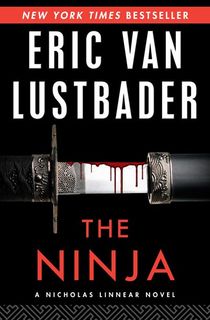
The Ninja
You continued the Jason Bourne series for a long time after Robert Ludlum died. Were you able to make those stories your own in some ways? How would you describe that?
I made the stories my own from the get-go. For The Bourne Legacy, the first Bourne book I wrote, I kept two of Bob’s characters, but killed them off in the first five pages. That was a way to segue the older readers, usher the new readers into the Bourne world I created. For me, it was a seamless procedure. I knew Bob well, I knew Bourne like the back of my hand. I don’t know how to explain it, but writing about him seemed the most natural thing in the world. Also, don’t forget, the worlds that Bob created was one set in the 1980s. So much had changed (and so much hadn’t! Conspiracies, for instance). Quite naturally, the conspiracies Bob created had their roots in WWII. That was his reference point, as it was for the majority of thriller writers of that decade. My world was based on current events, but even more so on an extrapolation of current events. I seem to have a knack for being able to peer into the future and figure out what might happen. More often than not I’m correct.

Why did you decide to step away from the Bourne books after 11 novels?
To be honest, I never thought I’d write more than three or four, but I was having so much fun and the novels were so successful that I just continued. Sixteen years–and eleven novels later–I just thought I’d had enough. In some ways, I was astonished I’d wanted to keep on for so long, but the fact is Bourne’s unique background–his amnesia–made it easy to keep conjuring up characters from his past he had no knowledge of. That made every book fresh for me. I also had created some fascinating characters along the way, including Bourne’s closest friend, Boris Karpov. When the books dictated that Boris had to die, I knew, deep down, the end was near. In addition, the female character of Sarah, the Mossad agent, who appears in, I think, three novels, was one of the creations dearest to my heart. But, you know, when the time came to take off Bourne’s trench coat, the decision was an easy one–as easy as it was to slip it on in the first place.
Your first few books, The Sunset Warrior Cycle, were fantasy. Then you moved in quite a different direction to create The Ninja. Can you remember your biggest challenge in writing that first book in the Nicholas Linnear series?
Well, I can tell you that I was extremely excited to switch over. When I was growing up, I always had a paperback book in my back pocket–you never knew when you’d catch a bit of time to read! I swung from SF/fantasy to espionage fiction. The thought of creating my own espionage world was incredibly exciting. The biggest challenge was the research, which took months and months, a lot of tracking people down, spending hours with them before they would talk to me about ninja. Completely separately, I had to research what Japan was like in the years following WWII. I went straight to source material, eyewitness accounts, documents the American occupation drew up, accounts from both the Japanese and the American sides, in order to get a balanced picture of life in Tokyo at that period when the country was given a new constitution and was in the process of reinventing itself into, eventually, an electronic powerhouse.
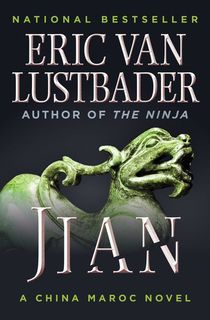
Jian
A number of your books—the Nicholas Linnear series which begins with The Ninja and The Miko; the Jake Maroc titles Jian and Shan, and others—draw upon the settings and history of the Far East. How did you first become interested in that part of the world?
I had become enamored of Japanese wood-block prints, and that interest led me to the Ronin Gallery in New York City, where I met a number of Japanese ex-pats. One afternoon, I heard them talking about ninja. I was curious, so they spent hour after hour telling me all about these specialized—and ostracized—warriors. Right in my wheelhouse. From that moment on, my mind simply ran away with story after story. And right away I knew I had something special with Nicholas and Japanese lore. Once I started my research, however, I expanded my interest to China, Cambodia, all of the East Asian cultures.
Have you traveled to Japan and other parts of the Far East? What research did you do there?
Oh, yes. I’ve been all over Japan, traveling as the Japanese do, sleeping on futon, spending time at the temple complexes of all six sects of Japanese Buddhism and also with Shinto priests at their shrines in the countryside. I’ve been to Hong Kong, Vietnam, Cambodia, Bali (I fell in love with the Balinese version of Hinduism, which is a combination of Shiva Hinduism and Mahayana Buddhism), Indonesia. My wife and I have spent a great deal of time in the Far East.

What are some interesting artifacts you brought home with you?
One of my prize possessions is a ninja sleeping jacket. It looks like a piece of armor. It’s made of many layers of leather, hardened in fire and water, then lacquered many times. Believe it or not, it will stop a sword or knife thrust. Astonishing technology. Another piece is a statue of a fox from a Shinto shrine. The fox’s mouth is open, holding a ball of rice, which signifies wealth. In an agrarian society such as Japan’s had been (and still is in the countryside,) a full rice bowl signifies a successful harvest and, thus, wealth.
Related: 17 Beach Reads That'll Give You Chills on a Hot Day
The Testament series has evolved in feel since you wrote the gripping first installment, The Testament. Now that the final book in the series, The Sum of All Shadows, has been published, how would you describe the ways in which the story has developed?
Since my father used to tell me stories of King Arthur and his Knights of the Round Table, I’ve been fascinated with ancient history and legend. What if, I wondered, there was a Catholic sect, that broke off on its own in order to study artifacts that feel outside the normal canon of their religion? That’s how Bravo and Emma came into being—as the modern-day inheritors of this sect’s mission.
Gradually, however, I found that world restrictive. After all, how many artifacts could they unearth that held monumental changes for humans? So I decided to go further. At the same time, I witnessed the world changing—mostly for the worse. The five-year hiatus between The Testament and its follow-up, The Fallen, provided me with a clear and pressing sense of how to proceed. In my subsequent research I came across a list of the fallen angels who had followed Satan in his rebellion against God. Defeated, they were sent down, sealed into hell for all time. But what if something caused a breach in that seal? That became the focal point for the subsequent trilogy: The Fallen, Four Dominions, and The Sum of All Shadows.
To be sure, the idea for the trilogy had its roots in what I was seeing all around the world—the rise of dictators, a right-wing terrified of the flooding of immigrants fleeing the endless wars, massacres, and atrocities rending their own countries. Fear had taken hold all around the world—and clever men in power were using that fear to manipulate entire populations. Once again Fascism was on the rise, and who could be behind such a dreadful, anti-humane plague? The ultimate Evil itself. In such circumstances a writer is compelled to write, in order to give vent to his own fear. This I did. The results you may read for yourselves.
Additional Books by Eric Van Lustbader:
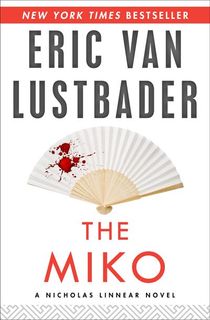
The Miko
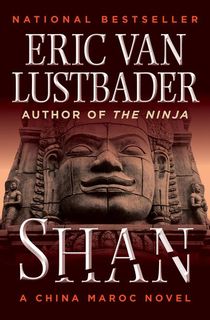
Shan
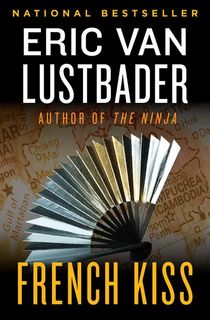
French Kiss

The Death and Life of Nicholas Linnear
Eric Van Lustbader is the author of numerous novels including the Nicholas Linnear series, the China Maroc assassin thrillers, the Sunset Warrior fantasy series, and the international bestsellers featuring Jason Bourne. For more information, visit www.EricVanLustbader.com. You can also follow him on Facebook and Twitter.
This post is sponsored by Open Road Media. Thank you for supporting our partners, who make it possible for Murder & Mayhem to continue publishing the mystery stories you love.
Featured photo courtesy of Eric Van Lustbader
